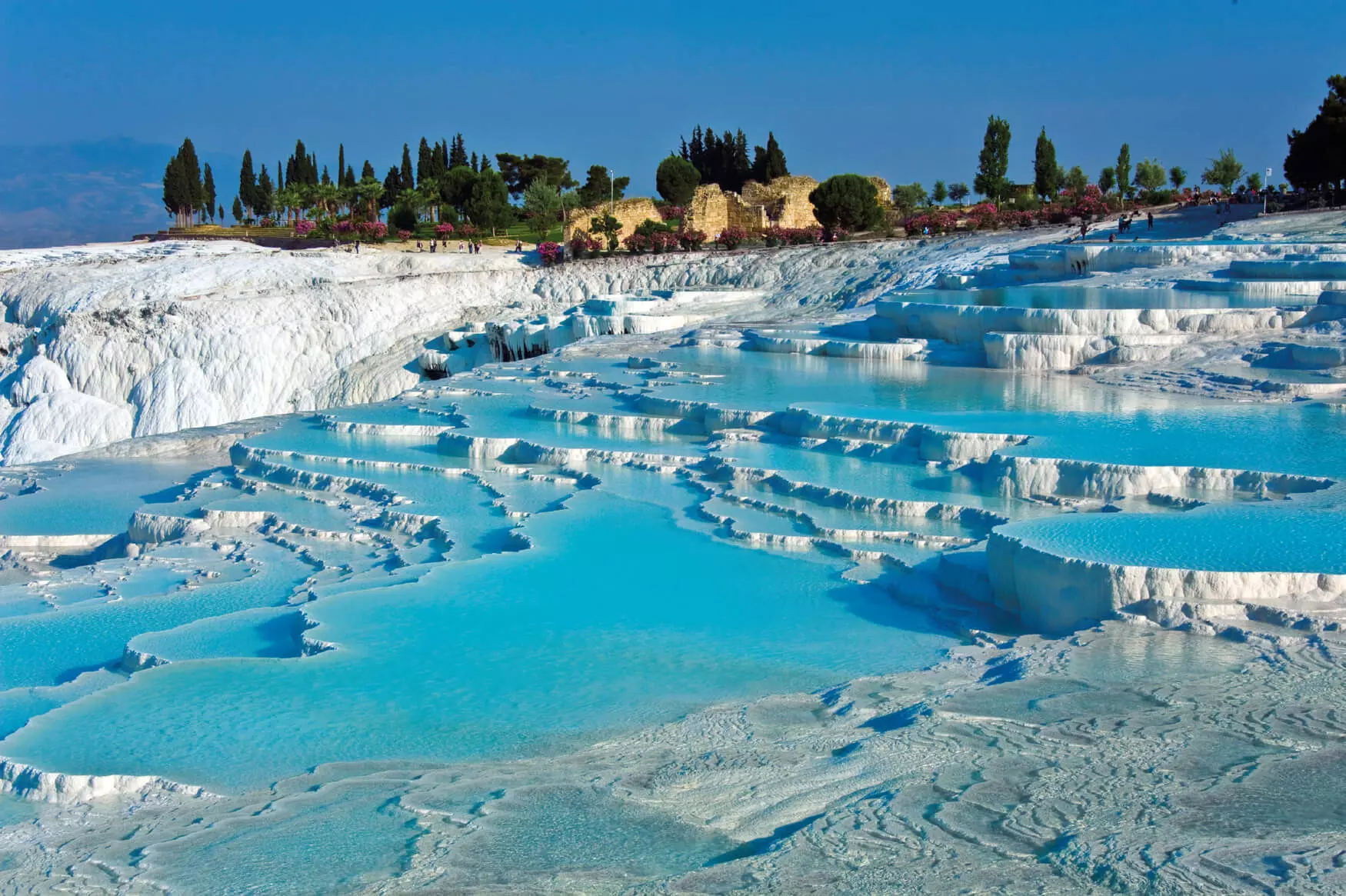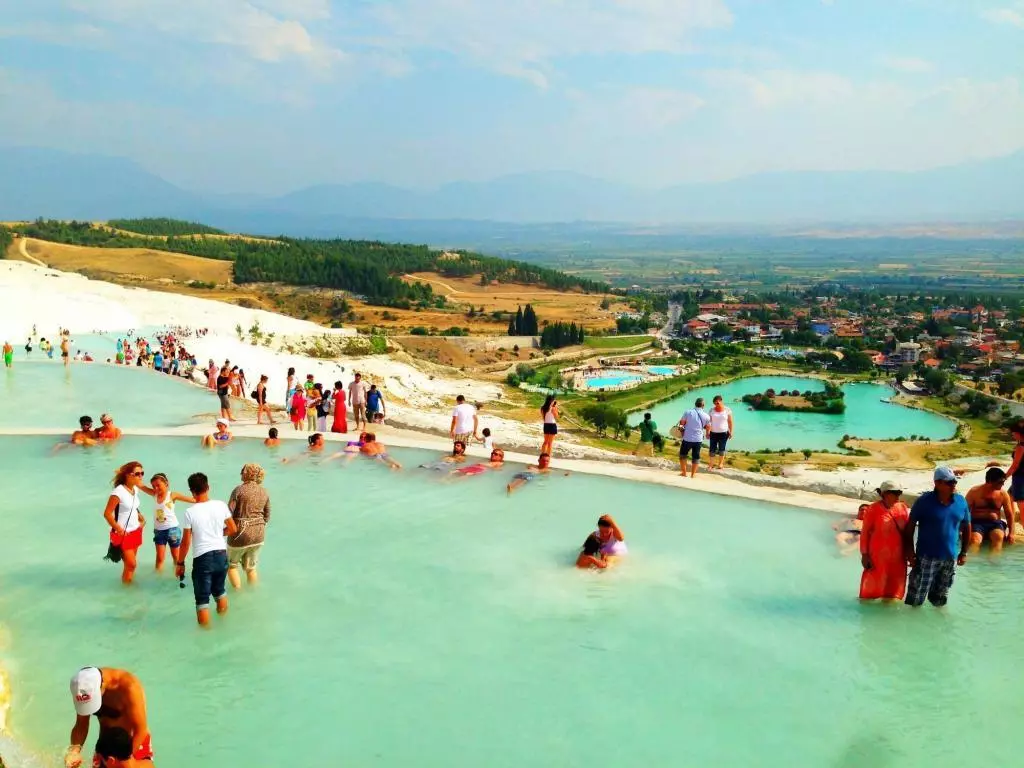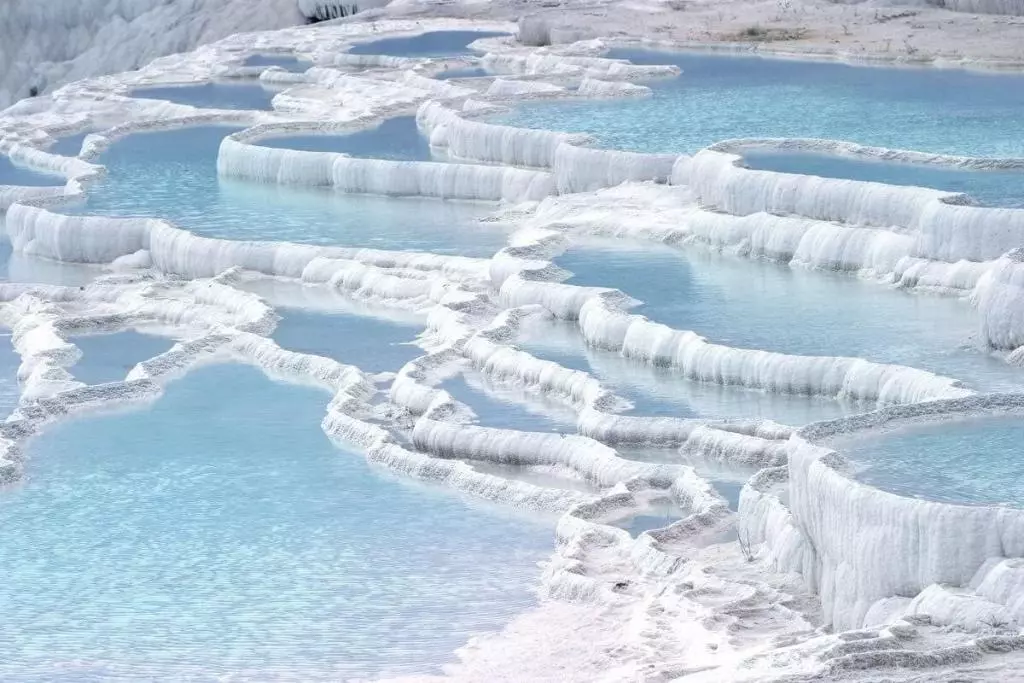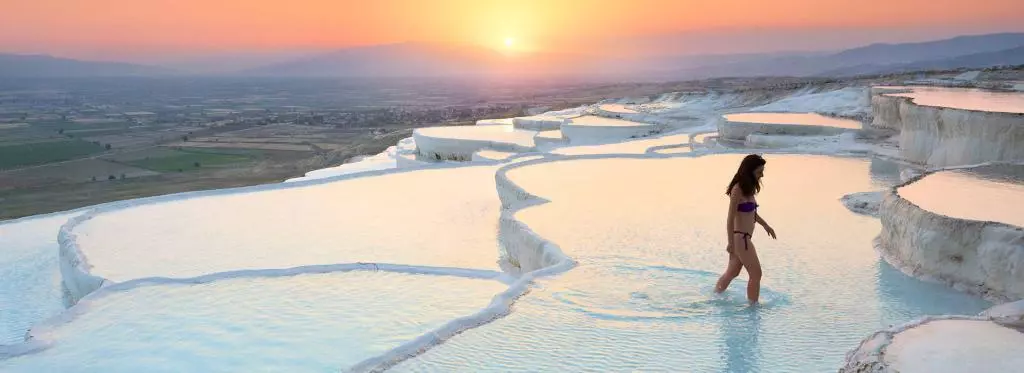White calcium terraces are known as travertines. Travertine is a versatile stone, formed with precipitation by the chemical reaction due to various causes and environments. Geological events that have caused the thermal source of Pamukkale affected the large area. In this region, there are 17 hot water areas with temperatures changing 35-100 Celsius. Pamukkale thermal source is a unit within the regional potential. The source has been used since antiquity.
After the thermal water moves out from the source, it reaches the travertine with a channel of 320 m length. From here it is poured into the travertine floors, where 60-70 meters of partial precipitation. It takes distant about 240-300 meters.
The temperature is 35.6 ° Celsius moved out from the source. There is a high amount of Calcium Hydrocarbonate in it. During the contact with oxygen, Carbon dioxide and Carbon monoxide disappear in the water, and calcium carbonate precipitates. This causes the formation of travertine. The precipitate is in the gel state in the first step. The reaction is carried out chemically; Ca (HCO3) + O2 CaCO + CO2 + CO2 + H2O. The precipitated calcium carbonate is initially in the form of a soft gel.
It hardens and becomes travertine over time. However, walking and playing of visitors on the floors causes the soft calcium carbonate to crush and disintegrate. Travertines are provided within a specific program with thermal water control. The amount of water can cause the algae that poured in the same amount for a long time. Therefore, travertines cause unpleasant pollution. In the formation of whiteness, weather conditions, heat loss, spreading, and duration are influential. Precipitation continues until the carbon dioxide in the thermal water reaches the equilibrium carbon dioxide of the atmospheric.
On-site analysis, the amount of carbon dioxide in the water per source is 725 mg / 1. When the water leaves the travertines, this amount drops to 145mg / l. But the calcium bicarbonate likewise drops from 1200 mg / 1 to 400 mg / 1. However, Ca drops to 576 / 8mg / 1. According to this analysis, from 1lt water on travertine 499.9mg / CaCO3 is precipitated. This amount is 1 1 / sec. 43191g per day for water. It means precipitation. It has an average density of 1.48g / cm 3. The average water flux is 466.21 / sec. 13584m area can be whitened. In practice, it is difficult to fulfill these requirements. However, this theoretical approach is 1mm per year. 4.9km 2 area can be whitened in the thickness.




